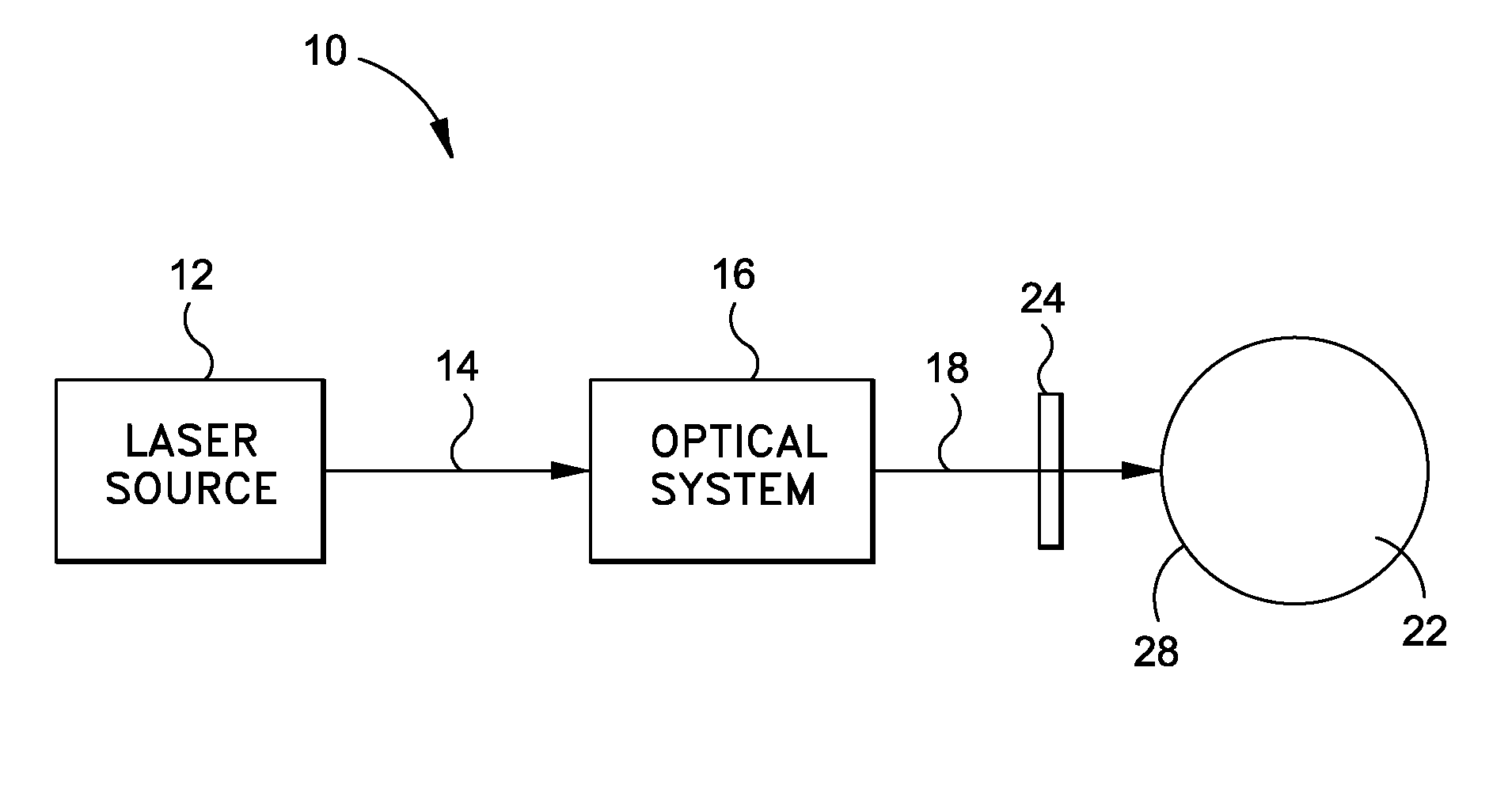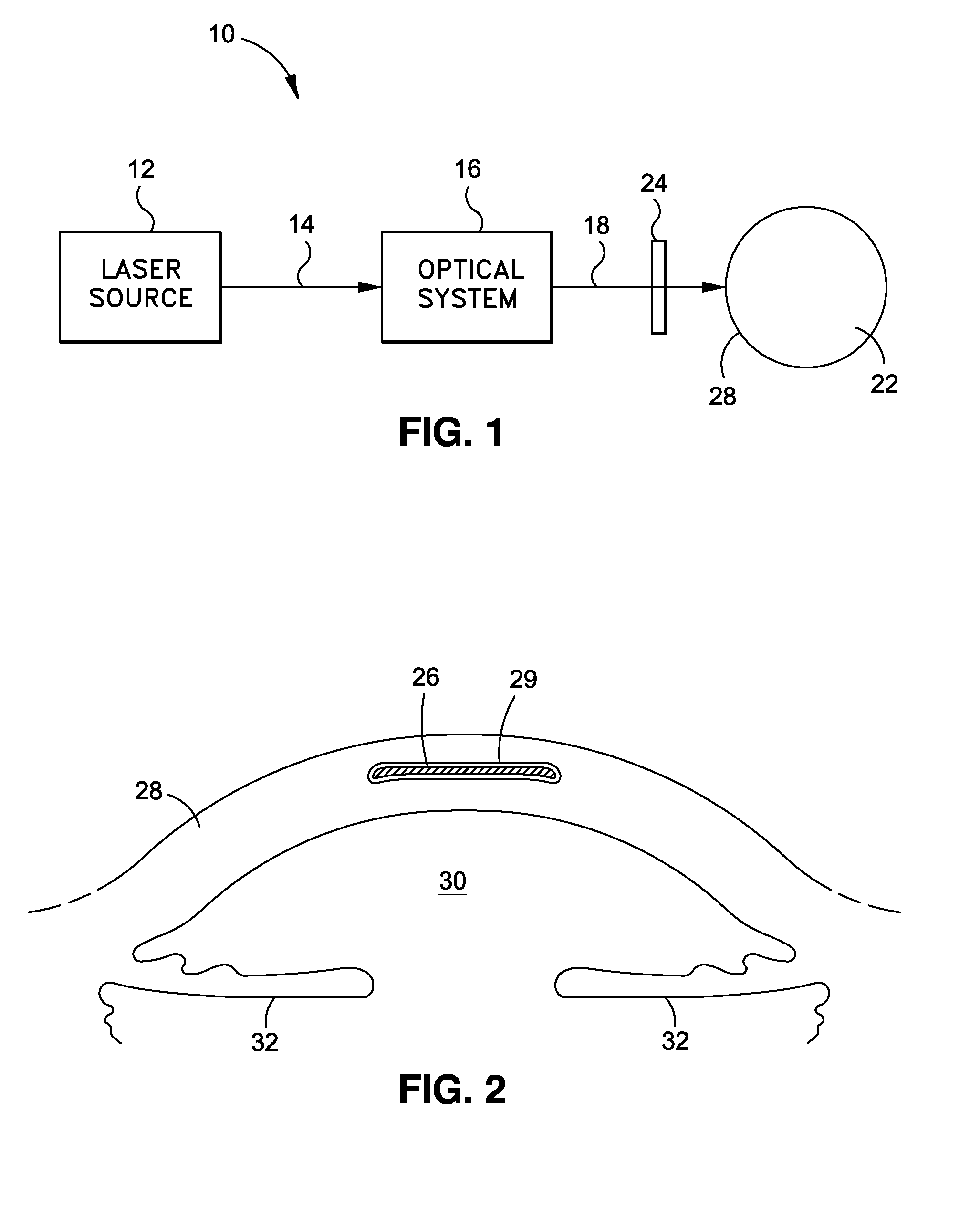Laser mask for creating a corneal pocket
- Summary
- Abstract
- Description
- Claims
- Application Information
AI Technical Summary
Benefits of technology
Problems solved by technology
Method used
Image
Examples
Embodiment Construction
[0018]The following detailed description is of the best currently contemplated modes of carrying out the invention. The description is not to be taken in a limiting sense, but is made merely for the purpose of illustrating the general principles of the invention, since the scope of the invention is best defined by the appended claims.
[0019]Broadly, the present invention relates to methods for correction of a visual deficiency of a patient. The present invention also relates to methods for using a mask to create an intracorneal pocket for receiving an intracorneal lens in a patient's eye. The present invention still further relates to a variety of mask configurations to create a variety of corneal pocket configurations.
[0020]In contrast to the prior art, some embodiments of the present invention use masks to insure that intracorneal pockets created by a laser conform to a desired shape. This enables the surgeon to accurately and quickly control the shape of the pocket without requiri...
PUM
 Login to View More
Login to View More Abstract
Description
Claims
Application Information
 Login to View More
Login to View More - R&D
- Intellectual Property
- Life Sciences
- Materials
- Tech Scout
- Unparalleled Data Quality
- Higher Quality Content
- 60% Fewer Hallucinations
Browse by: Latest US Patents, China's latest patents, Technical Efficacy Thesaurus, Application Domain, Technology Topic, Popular Technical Reports.
© 2025 PatSnap. All rights reserved.Legal|Privacy policy|Modern Slavery Act Transparency Statement|Sitemap|About US| Contact US: help@patsnap.com



